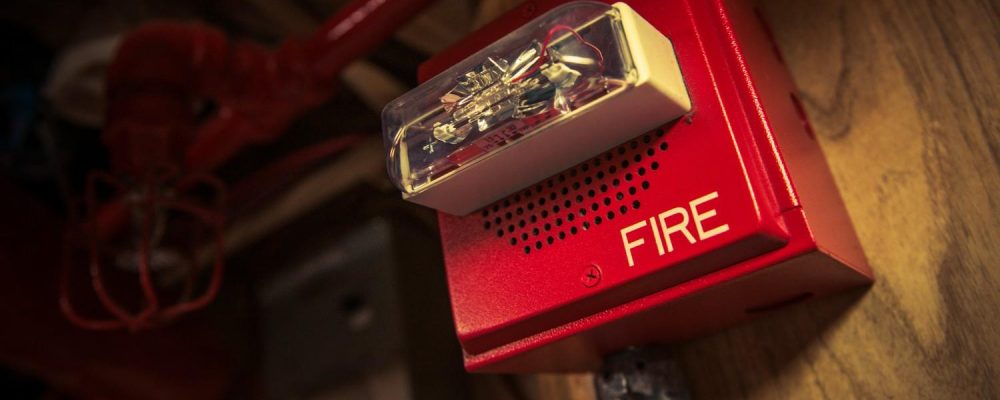Summary: Safety, compliance, and reliability are paramount concerns when making the best choice. DIY may save on installation costs, but the risks may be improper setups, violation of codes, and false alarms. A professional fire alarm system service guarantees the correct installation, conforming to codes, testing, and maintenance of the system. Experts such as Network Drops offer tailored fire alarm services, technical support, and occupant training so that homeowners or businesses may enjoy the comfort of a safe life and property with systems of quality and performance.

The fire alarm system is not merely a regulatory relief but a mission-critical safeguard for business continuity, employee safety, and compliance. Organizations from New Jersey to Pennsylvania and beyond usually debate the pros and cons of DIY fire alarm system installation and professional installation of fire alarm systems with infrastructure expansions, office relocations, and system upgrades.
On a paper cost comparison basis, DIY may be deemed cheaper. However, a professional installation is often the smart decision because the stakes are installation correctness, adherence with NFPA standards, and long-term reliability. This discussion will touch on the technical considerations, so you may feel the choice best suits your operational stability and compliance needs.
A fire alarm system isn’t a siren that blares when smoke is seen. Systems are made from networks of integrated sensors, control panels, annunciators, and communication modules that assist in performing under pressure, literally with lives and assets at stake.
Therefore, the installation method chosen influences the system’s compliance and reliability in operational emergencies.
The DIY approach is most attractive to a cost-conscious business owner or IT manager who believes in-house technical expertise addresses their system deployment well. It mostly buys already-configured fire alarm kits or components on the Internet while installing them without a licensed technician.
Professional intervention by licensed network, infrastructure, and other personnel reinforces compliance, reliability, and integration. This route employs NICET-certified technicians sworn to industry best practices to build systems for real-life situations.
Factor | DIY Installation | Professional Installation |
Compliance | High risk of non-compliance due to lack of NFPA/NICET knowledge | Full compliance guaranteed with certified technicians |
System Reliability | Variable; depends on the installer’s skill | Consistently high; tested and documented |
Integration | Limited, may not support access control or BDA systems | Seamless integration with other infrastructure |
Cost | Lower upfront, higher long-term (rework, fines, maintenance) | Higher upfront, optimized for long-term ROI |
Maintenance | No dedicated support; business handles repairs | Service agreements ensure preventive maintenance |
Insurance | May be rejected or have higher premiums | Typically approved, lower premiums possible |
A decision maker is not just mulling things over; he or she is also validating a vendor. Here is why companies usually commit to professional services at this stage:
For example, Network Drops and building infrastructure engineers do not just install alarms-they assess building layouts, integrate the fire safety procedures into the broader network systems, and issue contracts for maintaining these systems to ensure their continued performance.
Basic smoke detectors with sirens are standard, but professional installation will increase the advanced capabilities of the system that rarely come with DIY setups. Discussing these features affirms ROI on professional services and educates decision-makers on the need for a certified system.
Anywhere there’s cutting such critical infrastructure short, the price is paid in the future. Fire alarm system installation is one area where professional expertise is not a luxury but a necessity. Initially, DIY might seem the better option for saving money, but those savings quickly disappear with noncompliance, system compromises, and insurance headaches.
Professional installation with Network Drops of fire alarms is what organizations are concerned about, as well as the safety, assets, and operational continuity of the people they serve, to ensure compliance, reliability, and peace of mind. It’s more than just installation- it invests in safety, continuity, and credibility.
While technically one could install a fire alarm system with their own hands. It is strongly discouraged due to safety and legal issues.
They are basically what a DIY fire alarm system may comprise of.
Safety standards and regulations may or may not be met by DIY fire alarm systems. Given that they rarely undergo professional installation, maintenance, or monitoring.
Professional installation of a fire alarm system ensures higher reliability because trained technicians place, configure, and test the system to industry standards.
There are two main types of fire alarm systems the professionals install: conventional and addressable. Conventional systems split the building into different zones, pointing to the general area of the fire, whereas addressable systems locate the exact place of a fire.
"*" indicates required fields
Scott Fcasni is the driving force behind Shock I.T. Support’s commercial datacomm cabling division, delivering expert solutions that power reliable, high-performance network infrastructures. With extensive experience in structured cabling and a commitment to precision, Scott ensures that every project—whether for small businesses or large enterprises—meets the highest standards of quality and scalability.